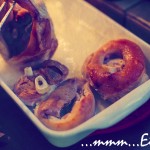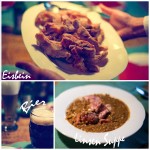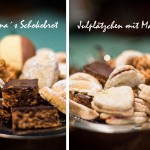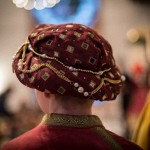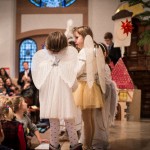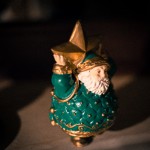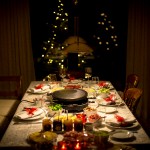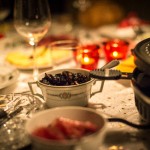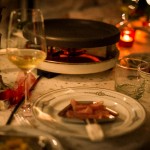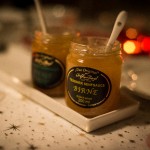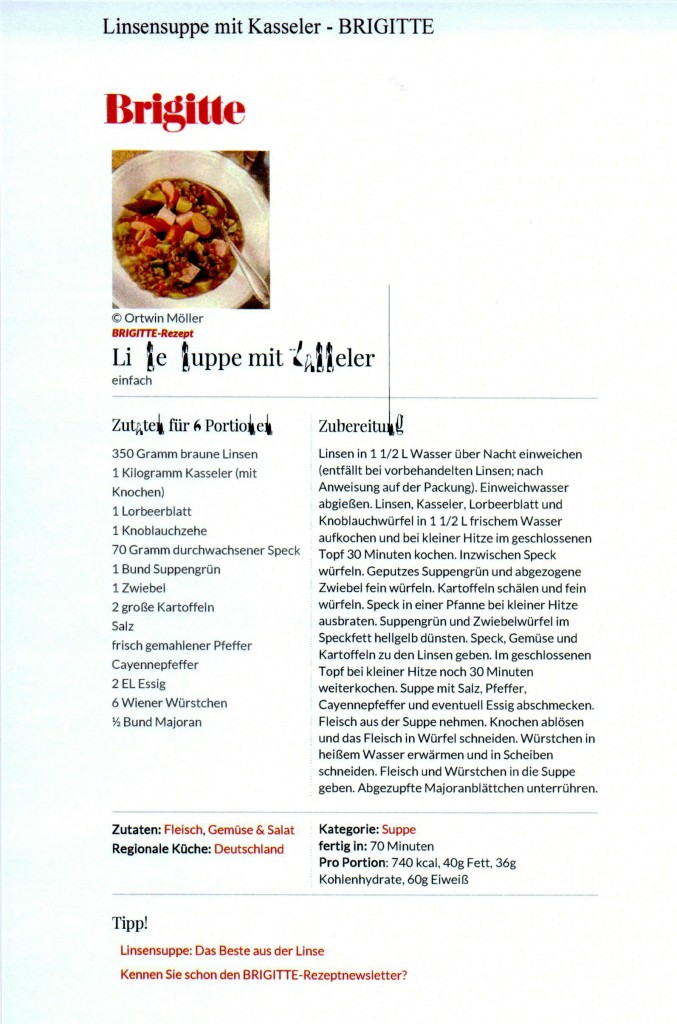Scroll down for family recipes: Schokobrot, Vanillekipferln and lentil soup (Linsensuppe).
Christmas in Germany is a very low-key, very family oriented affair.
In Serbia, not many things are low-key: when we love, we love passionately, when we fight, we fight ultimately and when we celebrate – we celebrate loudly. Families spend lots of time together. When it comes to Christmas, everybody else is also to be around. Christmas Eve might pass within the family, but Christmas day will mostly turn out very busy: neighbours will pop in to join uninvited, friends will phone to hear how you celebrated. There will be a row of Serbian sweet and salty pies, many creatively mixed salads like “russian”, “italian” or “mexican” and there will be wine. A lots of wine for everyone who decides to stop by.
In Germany, families live far apart and Christmas might be the only time of year they spend together. Everything is tightly planned and flawlessly organised. The food is delicious and there is an assigned portion for everyone. The scenery is beautiful, harmonious and divine, but for us who are used to talk loudly and eat on the go, at moments it feels unnatural.
Food is cherished. Every family has its tradition, usually a creative derivation of a custom known as Neunerlei. In mine, there is always a lentil soup (Linsensuppe) on the table and this year, it came with an Eisbein (salted pork legs). Lentils symbolize money, pork stands for luck (a common theme in many countries, including Serbia). It is believed one should eat up all the lentils in the plate not to run out of money during a year to come. During the Christmas day lunch, we all dig in and lick it up.
Christmas Day is a peak of christmas season that starts with the first Advent, falling on the fourth Sunday before Christmas (an equivalent to the Serbian nativity fast, or “big fast”, that last for 40 days before the Orthodox Christmas (January 7)). During the Advent, Germans bake biscuits in a series of intimate friends and family events known as “plätzchen backen”. These biscuits, known as Weihnachtsbäckerei, are piled all over the place and served during the Advent and Christmas time. Every family has its own favourite recipe and enjoys adding a personal touch to the biscuits. For the families with young kids, this is a good occasion to invite plenty of curly heads to dive its small hands into the buttered dough and come out with all kinds of baked shapes: animals, stars, hearts or angels. For the older ones, this is a time to bond, and get back to the safety of the parent´s home. For the curious ones, my mother-in-law gave away the secret of Oma Alma´s Schokobrot (chocolate bread) – after the gallery.
Our Christmas Eve bash was all about love, life, chat and raclette.
- A band of angels
- A prophecy and a reindeer
- Eisbein – Pork Legs
- Pork Legs and Lentil Soup
- Christmas biscuits are baked during the Advent
- At 3pm begins Kindergottesdienst
- Kindergottesdienst
- Kindergottesdienst
- Kindergottesdienst
- Christmas Decoration
- Star of Bethlehem
- Christmas Decoration
- Christmas Raclette
- Christmas Raclette
- Christmas Raclette
- Christmas Guest
- Christmas Raclette
- Midnight
Oma Alma´s Schokobrot
250 g Rama (margarine)
250 g Zucker (sugar)
1 Vanillezucker (vanilla sugar)
6 Eier (eggs)
250 g gemahlene Mandeln (ground almonds)
100 g Mehl (flour)
250 g Blockschokolade – fein gerieben (cooking chocolate – fine grated)
einen großen Schuss Rum (a big shot of rum)
Zartbitter Schokoladenguss (dark chocolate glaze)
Rama, Zucker, Vanillezucker und Eier schaumig rühren. Mandeln und Mehl und Blockschokolade unterheben und den Rum zugeben.
Auf ein Backblech mit Backpapier den Teig streichen und bei 190 Grad 25 – 30 Minuten backen.
Wenn der Teig noch lauwarm ist, den Schokoladenguss auf den Teig geben und in Würfel schneiden, bevor der Schokoladenguss ganz hart ist.
(Margarine, sugar, vanilla sugar and eggs mix until foamy. Stir in almonds, flour and cooking chocolate and add Rum. Coat the bottom of a baking plate with baking parchment, fill in and smooth down the pastry and bake at 190ºC for 25-30 min. When lukewarm, spread the chocolate glaze and cut in pieces before the glaze hardens.)
Vanillekipferln (Vanilla Crescents)
175 g Mehl (flour)
75 g ungeschälte gemahlene Mandeln (unpeeled ground almonds)
50 g Zucker (sugar)
Innere einer Vanilleschote (inside of a vanilla pod)
100 g Rama (margarine)
1 Eigelb (egg yolk)
50 g Puderzucker und 3 Päckchen Vanillezucker (50g powdered sugar and 3 small packet of vanilla sugar)
Mehl, Mandeln, Zucker, Vanillemark, weiche Rama und Eigelb erst mit dem Knethaken des Handrührers und dann mit den Händen verkneten. Den Teig in Folie verpackt etwa 1 Stunde kalt stellen. Aus dem Teig Hörnchen formen und auf ein mit Backpapier belegtes Blech legen. Im Backofen bei 200 Grad 15 Minuten backen. Puderzucker und Vanillezucker mischen und die Kipferl noch heiß darin wenden.
(Stir thoroughly flour, almonds, sugar, vanilla pulp, margarine and egg yolk, with the spiral mixer and hands.Wrap in foil and put in fridge for one hour. Using the dough form crescents shapes and place them on a baking plate coated with baking parchment. Bake at 200ºC for 15 min. Stir powdered sugar and vanilla sugar and turn the cookies carefully in this mixture. )



